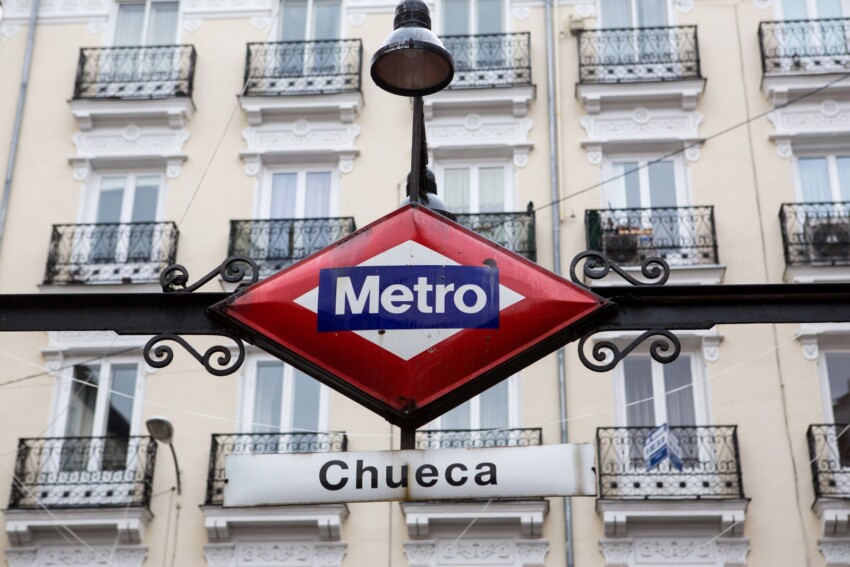

The Soho of Madrid, the gay district, the movida area: Chueca is this and more, but in summary it can be said that Chueca is the Madrid of the Madrileños. They say Chueca is transgressive and excessive, but what best defines it is freedom and tolerance: Chueca is the place to be yourself without being judged.
Known as Madrid’s liveliest and trendiest neighbourhood, frequented by Madrileños and tourists who want to feel like one of the locals, Chueca is yet another example of the infamous Cinderella turned trendy princess.
It was mainly Madrid’s gay community that brought the area out of the degraded state it had been abandoned in after the end of Francoism and turned it into a hub of Madrid life (especially at night).
With the opening of the first gay bars and the organisation of a colourful city carnival, a process of urban redevelopment began, with more and more people wanting to move in. Today, Chueca is Madrid’s main residential and cultural LGTB area and it is no coincidence that the World Gay Pride, a celebration of gay rights, is held here every year.
Beloved by Pedro Almodovar, who took the first steps of his directing career here, Chueca is more a place to live than to visit.
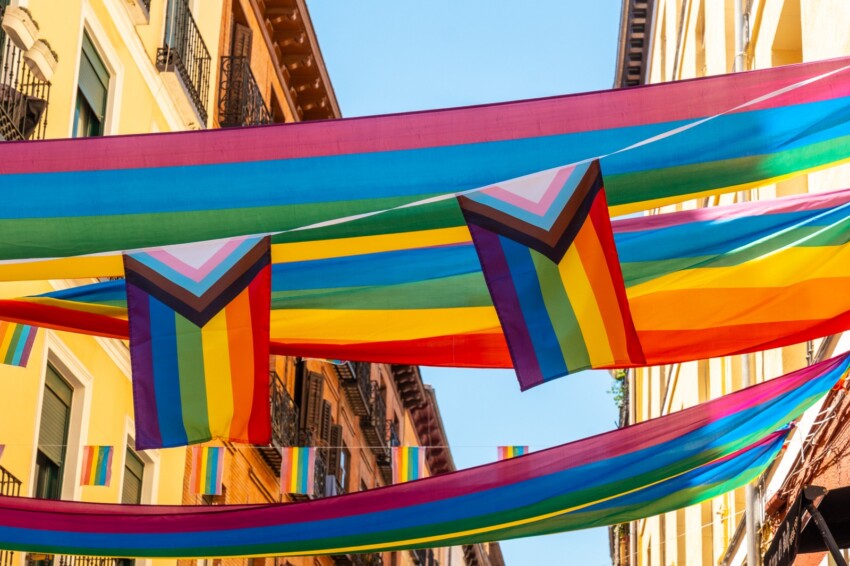
The name of the district comes from Federico Chueca, a famous composer of ‘zarzuelas’, a typically Spanish opera-drama genre. Originally from Madrid, he lived between 1846 and 1908.
Don’t expect to find Madrid’s most famous museums and attractions in Chueca: you come here more to breathe in the atmosphere than to visit monuments.
That said, it is not uncommon to come across elegant buildings that have survived the years of decay while strolling Chueca’s bohemian streets.
One of Chueca’s elegant palaces is the Real Hospicio General de Pobres, an 18th-century building on Fuencarral Street that will catch your eye for its splendid Spanish Baroque façade.
The building is currently home to the Museo de Historia de la Ciudad, recommended for those who want to learn about the history of the city of Madrid. The museum collection, which includes paintings, photographs, prints and illustrations, sculptures, furniture, weapons, fans, jewellery, coins and medals, traces the historical and urban evolution of the Spanish capital.
Here you can admire Madrid as it was depicted by Goya in his famous work Alegoría de la Villa de Madrid, made during the years of French occupation; the porcelain collection of the Real Fábrica del Buen Retiro is also interesting.
Another beautiful palace to admire in the Chueca district is Palacio de Longoria, one of the few modernist buildings in Madrid. You won’t find it difficult to recognise it: the exterior façade is characterised by wavy lines and rich floral decorations and will remind you vaguely of the eccentric Guadì houses in Barcelona.
The palace is currently home to the SGAE, Spain’s SIAE, and there are no guided tours. If you do manage to get in, take a look at the beautiful staircase in the atrium and the art nouveau stained glass windows.
The third noteworthy building is the palace of the Marquis of Matallana, which now houses one of Madrid’s most original museums: the Museum of Romanticism, displaying Empire-style furniture, costumes, porcelain dolls and 19th-century pianos.
Who said Chueca is just clubs and nightlife?
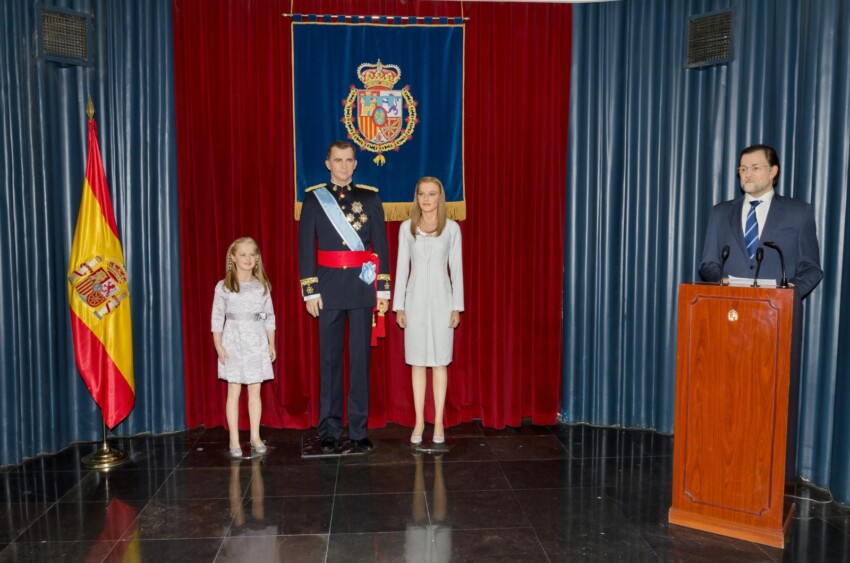
For a carefree afternoon visit Chueca’s family-friendly attraction, the Madrid Wax Museum and enjoy walking inches away from celebrities past and present, such as Cleopatra, Miley Cirus, Catholic kings and George Clooney.
There are more than 400 wax statues on display: keep your camera handy, like a paparazzo would!
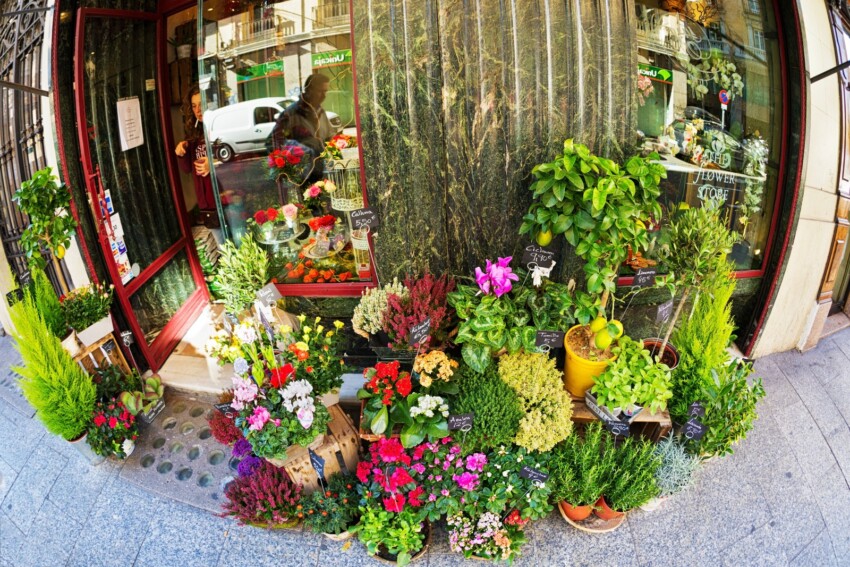
Most tourists who visit Chueca during the day come here for the shopping. In fact, the neighbourhood is a real shopping paradise!
Chueca’s commercial development has revitalised a neighbourhood that for years was snubbed by Madrileños. Alongside the traditional boutiques, a myriad of shops have sprung up that were immediately snapped up by up-and-coming stylists, designers and artists.
Today in Chueca you can shop in the shops of the big chains, famous designers, new trend-setting brands; you can buy clothes, books, records…
Women with a passion for shoes – and why not, men too – will love Chueca madly: here you can find everything, extravagant, elegant, very expensive and super cheap shoes. There are many outlet shops selling brand-name shoes from previous vintages at heavily discounted prices.
LGBT tourists who want to take home a spicy souvenir can browse the sex shops in the area.
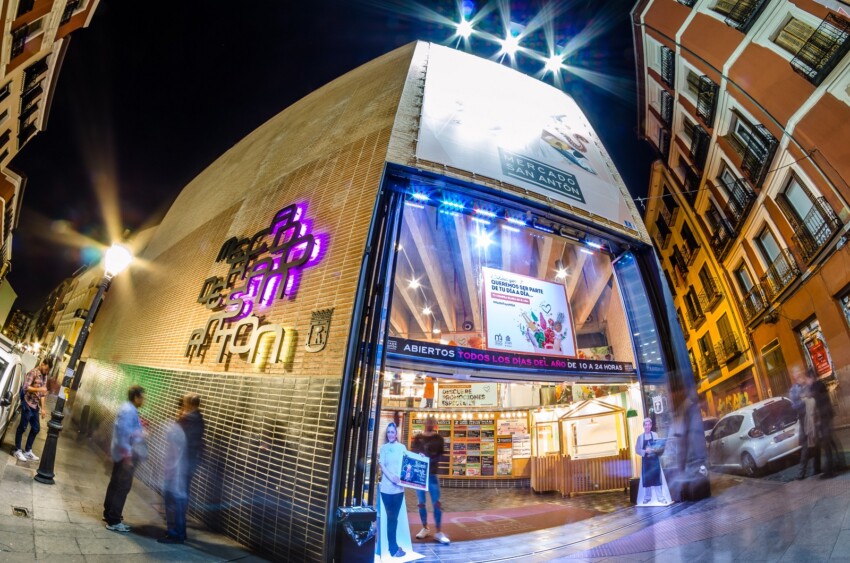
In such a commercially vibrant area, there is no shortage of markets. Two are the most famous markets in Chueca:
When the sun goes down and the shops close, Chueca explodes with energy and vitality. Night is the time when the streets and clubs of the neighbourhood fill up with people who want to drink with friends or dance until morning.
The choice of venues is vast and by no means limited to gay clubs: you can find modern New York-style restaurants, a historic bar serving excellent vermouth, trendy lounges, traditional taverns, live music and DJ sets, clubs, pubs…
It’s impossible to walk down a narrow street in Chueca without coming across a flat, hotel or guest house: the neighbourhood is teeming with places to stay, so finding the right one for you will simply be a matter of budget and how close you want to be to the centre of Madrid: choose the southern part of Chueca to be closer to the Gran Via, while the northern part, between the Tribunal metro stop and Plaza Santa Barbara is much quieter, although further from the centre and the main attractions of the Spanish capital. On average, the rule in Chueca is to stay in flats: there are very few hotels!

The Chueca district is served by the metro line 5, so getting there by public transport is very easy. Alternatively, you can use line 4 and get off at the Colon stop along Paseo de Recoletos at the north-eastern end of the district. If you are in the centre of Madrid, you can reach Chueca easily on foot, as it is located just north of Gran Via.
Chueca is one of Madrid's central districts, north of Gran Via and bordering the Malasaña area; it is easily reached by metro.
The main arteries of the district are Fuencarral and Hortaleza streets, but the nerve centre of the area is Plaza de Chueca.
City Card allow you to save on public transport and / or on the entrances to the main tourist attractions.
